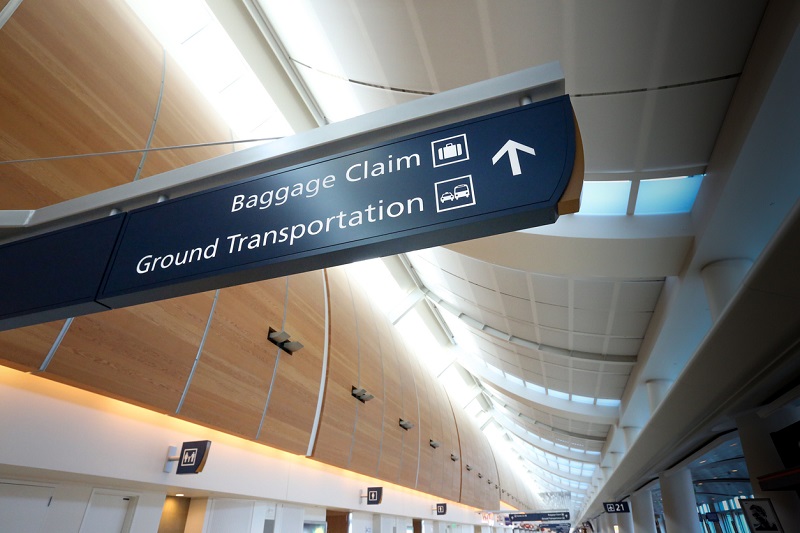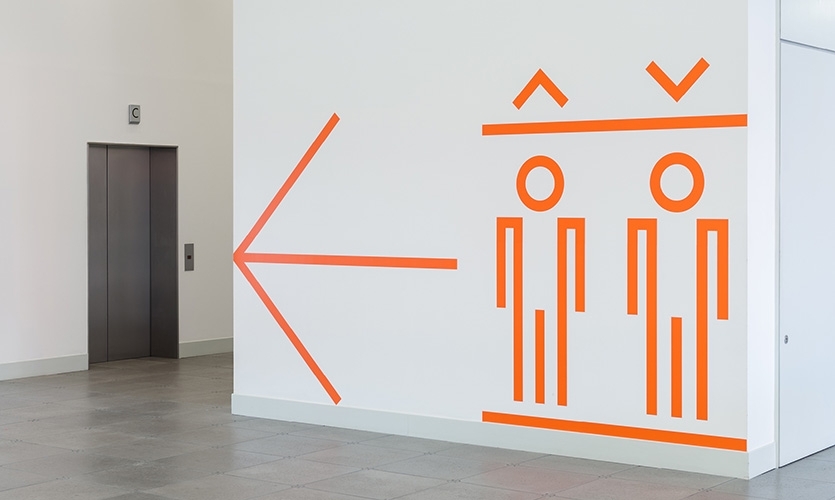Wayfinding strategy is the consistent utilization of a set of standard principles in order to help users orient themselves while navigating a given area. This is accomplished via visual cues, including maps, colors, signage, and symbols, with the end result being a safe and easy-to-follow pathway that is usable for the vast majority of individuals. A solid wayfinding strategy should be as simple and intuitive as possible.
The importance of a well-defined wayfinding strategy
Developing and consistently utilizing a standard wayfinding strategy is important, and there are many factors to consider when beginning to design a wayfinding system. For instance, it is important to understand that you can’t always accomplish everything you want, so the prioritization of certain aspects of a given wayfinding route will be necessary and should be completed at the very start of the project. This will ultimately help focus the project and is often the first step towards creating a well-structured wayfinding path.

arrival signs
What should be considered for your strategy?
As mentioned previously, there are a few factors to consider when creating a wayfinding path. The end user should always be the priority, so understanding who will be utilizing the path to navigate, including their needs and behavior, is essential for creating an efficient route. These are outlined below:
A user’s needs and behavior
Understanding the user is the most crucial aspect of any wayfinding strategy. Even if a route is created that seems as though it should work well, if the majority of visitors have difficulties, then the route is worthless. Collecting and studying data on problem areas in the route is crucial so that the issues being regularly encountered can be identified and fixed. This may mean eliminating choice so that individuals have fewer options available other than the path dictated by the wayfinding system, allowing for more influence and control over future user pathing.
Environment: Where will your users be?
Wayfinding isn’t just about helping users get from one location to another. Helping to familiarize and orient them within a new environment is another crucial aspect, so helping them identify exactly where they are is a priority. Using a marker as simple as a symbol or sign is completely acceptable, but it is important that a distinction is created between different areas so that repeat visits are easier on the user as they learn to navigate on their own. A successful wayfinding strategy influences not only the first visit but subsequent visits as well.
User reactions to signage and displays
Creating the pathway isn’t enough, as signage, displays, colors and symbols do not have the same impact on every user. If it is possible, research in advance which is likely to be most effective for the particular navigational use case for which the wayfinding system is being designed. Sometimes signage and displays just aren't effective, but color is more so. There is often a degree of trial and error at this stage, but it’s important to know what users respond to best in the given environment.
Document your strategy and findings
No matter how seemingly mundane or insignificant it might seem, all research findings from the initial stages of wayfinding strategy development should be recorded. Documentation can help lead to better insight on what changes or improvements should be made to the wayfinding system and route. And if the route proves to be effective over time, it can also provide valuable information to illustrate the wayfinding system’s core design, so that others may be able to utilize the same or a similar design concept.
What are the principles of an effective wayfinding strategy?
A good wayfinding strategy consists of 7 major principles: Visibility, Decision points, Lighting, Clustering, Pathing, Landmarks, Limited User Navigation, Intuitive Design, and Consistency.
Visibility
First and foremost, the wayfinding path needs to be plainly visible and easy to spot from a distance. Good wayfinding typically works with the environment and not against it, providing guidance in a subtle way. However, there are always situations where subtlety is not the right solution. If it turns out that bright colors, larger signs, and obvious markers are required to assist users in navigating an area, then ultimately, that is the right choice for the environment.

Decision points
In wayfinding, an intersection or crossroad is typically described as a decision point. This is where a choice must be made, and the user will need to decide whether to go down one path or another. A good wayfinding design strategy provides adequate information for each option, so that the user can make an informed decision when they reach a crossroad.
Lighting
Adequate lighting is an important aspect of any wayfinding strategy as it is what allows the path to be visible in indoor areas that do not or cannot receive natural light, or must be navigated indoors or outdoors at night when sunlight isn’t available. Utilizing specific light colors or intensities can also help to distinguish various pathing choices. It is important that you create a sense of place and lighting is one of the most effective ways to do so.
Clustering
Clustering is bound to happen in any visually competitive space. The idea behind clustering is that there are multiple signage displays competing for the user’s attention. This type of visual overload in a single area can make it difficult to discern a given pathway or understand information presented via blocks of text. While there are a few specific benefits to clustering -- including heavier foot traffic around and attention to whatever information is being presented as part of the “cluster” -- in general, clustering should be avoided as it can be inefficient and overwhelming to users.
Paths
Creating efficient, usable paths out of landmarks and man-made signs which individuals can use to navigate their environment is the primary end goal of any wayfinding strategy. The basis of wayfinding is creating a pathway out of a seemingly mundane set of locations. But multiple effective paths can absolutely be born out of a loose organization of landmarks. And once a user is familiar with the path, it becomes much easier for them to return to the same end location in the future.
Landmarks
The utilization of landmarks is a cornerstone of most wayfinding strategies. A landmark can be almost anything -- a sign post or fountain, or a natural landmark such as a large tree. The point of these is to create identifiable markers that can be seen from a distance, creating a sense of place while orienting the user. Landmarks also act as anchor points to link paths from one to another, ensuring that people always have a primarily navigational reference point to which they may return.
Limited user navigation
While there are situations where choice is good, this often isn’t the case with wayfinding. Limiting a user’s navigational options means presenting fewer paths to them so that their route is more tightly controlled. Fewer choices makes it more likely that a user will get where they need to be more quickly, as they will be less likely to end up side tracked or lost along the route.
Intuitive design
Remember that allowing a user to intuitively navigate a space is usually more effective than an artificially constructed route. This means that the elements discussed previously should be employed in as intuitive a manner as possible even while using signage, colors, symbols and mapping that may not naturally occur in the environment. Intuitive design ultimately allows users to understand their space more quickly, and can make their directional sense in the space much stronger in the long term than something artificially constructed.
Consistency
Your pathway should always be consistent. This can be accomplished in many different ways, including via a set graphic or color scheme, lighting, or signage, but the end goal is that the path should be easily recognizable even from a distance. This creates a sense of comfort and familiarity for the user making it easier and less stressful for them to navigate the path laid out for them by the overarching wayfinding strategy.
Why should organizations consider adopting digital wayfinding?
Digital wayfinding is becoming more common all the time with many organizations making the leap as they learn about its sizable benefits and very few drawbacks.
Cost efficiencies
There are often times when digital wayfinding systems are more cost-effective than analog or physical wayfinding systems. Much of this has to do with how digital wayfinding systems are updated. Instead of having to physically print map updates and guides, or create new signs and repaint entire sections of road or walls, digital wayfinding systems are updated via software, which is generally done remotely. Once the software is purchased, most companies offer staff training so that updates can be made directly by the organization utilizing the system.
User experience
When it comes to navigating new places, end users have come to expect a simple, easy-to-use digital experience. With the popularization of smartphone apps like Waze and Google Maps, it is now simply the default. This expectation means that companies that fail to adopt digital wayfinding technology may find themselves facing negative user perception by appearing to be behind the times and unwilling to modernize.
Although wayfinding strategy in 2020 hasn’t changed greatly versus that of 2019, the technology behind these systems -- the kiosk software and hardware -- continues to improve by leaps and bounds. As the importance of wayfinding is unlikely to ever diminish, it is important for organizations to stay ahead of the curve by embracing digital wayfinding now in order to create and refine the best possible experiences for their users.


